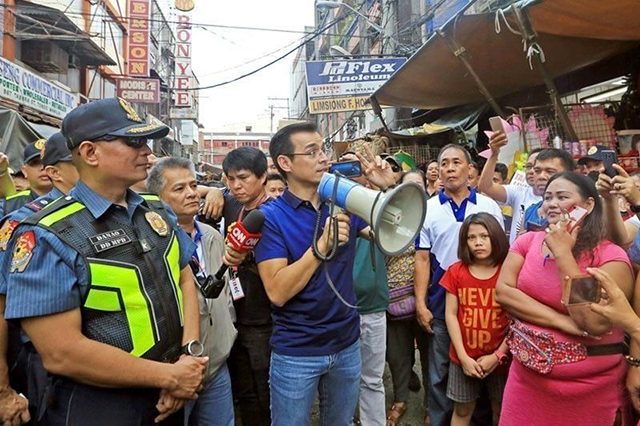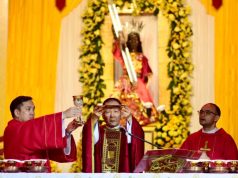
Manila Mayor Isko Moreno launched massive cleanup operations in his first month on the job, organizing informal hawkers that used to crowd the streets and public places and ordering a more efficient garbage collection system, among other efforts.
While a few raised concerns on what would happen to vendors who were driven away from their spots, Filipinos on social media —and ambassadors—were generally welcoming of the move.
Clearing up Manila was among his main campaign promises.
So far, he was able to successfully clear up the busiest streets and roads in Manila which were once packed with street vendors.
These include
- Claro M. Recto Avenue in Divisoria
- Dagupan Street in Divisoria
- Carmen Planas in Divisoria
- Plaza Miranda
- Quezon Boulevard
- Blumentritt
- Lagusnilad underpass
- Carriedo Street
- Evangelista
- Rizal Avenue
Reasons for the cleanup
Filth, it’s there for all to see
Hailing from the slums of Tondo, Moreno called his hometown “dugyot” or “filthy,” warranting a the city-wide makeover.
“I’ll move heaven and earth to clean up the city. Dugyot kami. Papaliguan ko lang naman. I want to show that I can walk the talk,” he said in a televised interview.
“Talagang Manila is full of sh*t—literal, not metaphorically,” Moreno said in a separate statement.
Removing extortionists
Moreno also claimed that what he actually sought to stop is the illegal business of so-called “organizers,” that is to extort money from street vendors in the form of rent.
The actor-turned-politician even presented to the media last week two alleged collectors of payoffs.
“I am not anti-vendor. You can tag me as anti-organizers, who are no different from criminals who extort the poor,” Moreno said.
“It’s difficult to accept real talk. It pains the ears. We’re just trying to put things in order. You can tag me the way you want to, but the truth cannot be denied,” he added.
Giving significance to heritage sites
Moreno also conducted the cleaning on Manila’s heritage areas as part of his goals to revive them.
He lamented that one of these historical sites, the Andres Bonifacio Shrine across the Manila City Hall, became a public toilet.
“That is the office of the mayor, the seat of power of the City of Manila. Tapos eto, amoy tae rito. Nagkalat,” Moreno previously said.
What’s next for the vendors?
Facebook page Ibong Adorno raised the matter on the hundreds of informal vendors of Divisoria affected by the cleanup.
“The clearing operations of vendors in Divisoria and other parts of Metro Manila sidewalks raise concerns on the welfare of these urban dwellers,” the page said on July 5.
“How were they integrated in the formal decision-making body? How were they consulted in methods applied that should enable them as citizens to thrive in a city mired in crisis?” it added.
Divisions of DivisoriaWhen informal workers are forced out of their livelihood due to beautification campaigns for…
Posted by Ibong Adorno on Friday, July 5, 2019
Meanwhile, a customer of a popular bookstore at Lagusnilad which stall also got evicted aired his criticism for the lack of a plan on the part of the vendors.
“The question is, where will these stalls and vendors be relocated? If working-class folk are not allowed to make a living on the last scraps of land that have not yet been cannibalized by gentrification, then where is their place? Whose city is it anyway?” Facebook user Karl Castro said.
Books from underground and all other stalls at the Manila City Hall underpass have been evicted. The underpass is for…
Posted by Karl Castro on Monday, July 15, 2019
Moreno was only able to provide suggestions when reporters asked him about it.
“If you want to organize as vendors, you organize among yourselves based on the policy of the city. What is that? Bigyan ng madadaanan ang tao. Panatilihing malinis ang inyong mga panindahan. Huwag niyong ookupahan ang lugar na hindi pinapayagan. Ganun lang,” he said in an interview.
In another speech, Moreno said that the merchants could have a renting system for their stalls.









